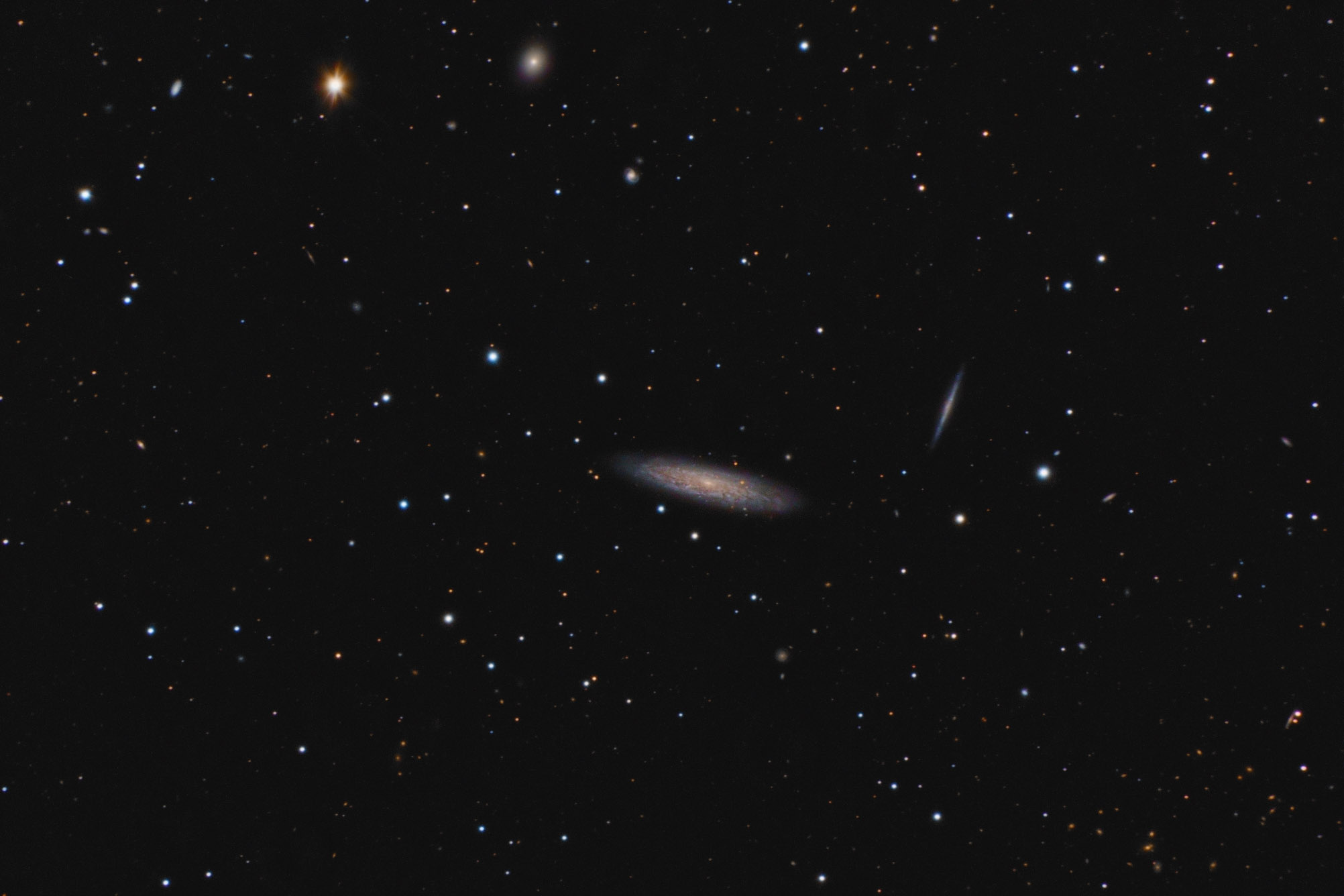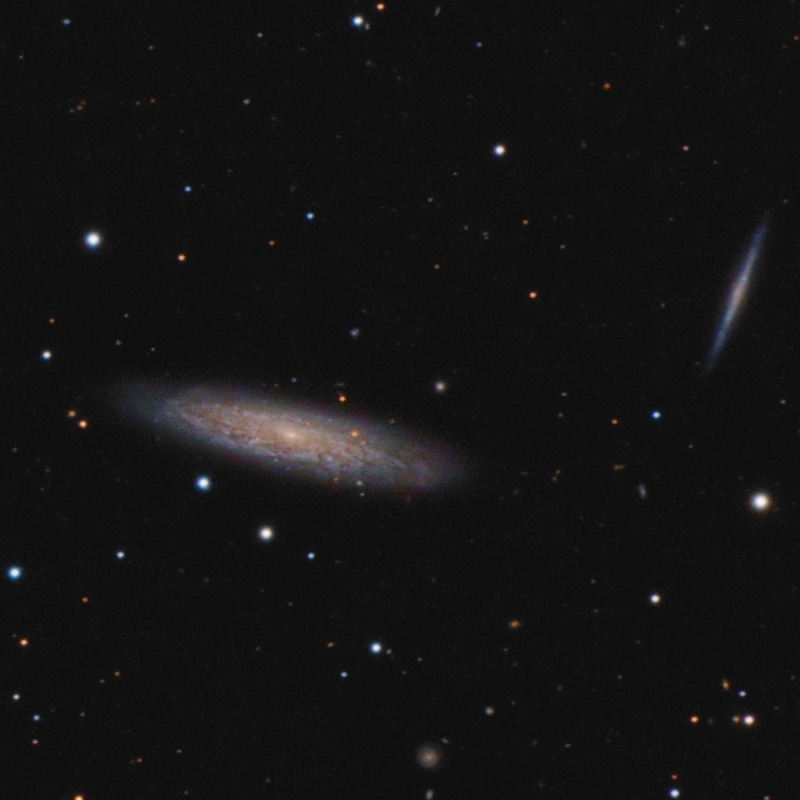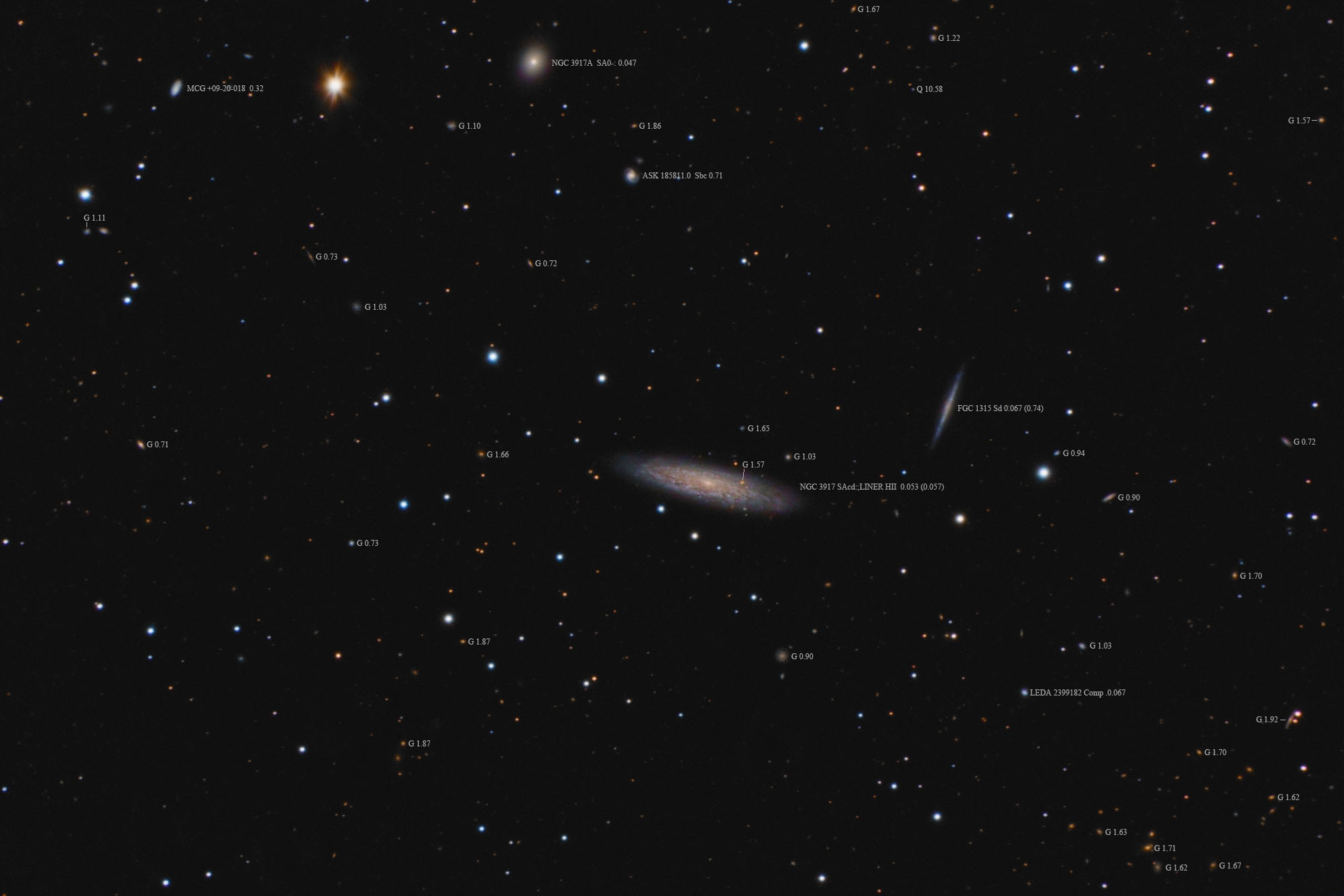| Description | Images |
Object name: NGC3917Designation(s): NGC3917, FGC1315, FGC 1315/UGC 06802 is a flat galaxy in Ursa Major two degrees below Phecda, the southwestern star in the bowl of the Big Dipper. While I'm fascinated by flat galaxies like this one, NGC 3917 is a nice flocculent spiral, a type with many arm segments rather than the full arms of a grand design spiral. So this was a double for me. I centered on the flocculent spiral since it was the more photogenic of the two. By redshift, FGC 1315 is 67 million light-years distant while NGC 3917 is closer at 53 million light-years. Both are further away by Tully Fisher measurements, 74 and 57 million light-years respectively. Either way, they are apparently more than 10 million light-years apart so not related, just in the same line of sight as seen from our galaxy. There are quite a few galaxies scattered around the field. Assuming their redshift distance is correct, FGC 1315 has a diameter of about 45,000 light-years while NGC 3917 is much larger at 75,000 light-years. It is not seen edge on so its flatness can't be determined very well, but appears to me to also have a very small central bulge. In fact, it did make the 2 micron flat galaxy catalog as 2MFGC 09297. This catalog has less strict standards for flatness. Related Designation(s):2MASS J11504544+5149281, 2MASX J11500665+5151171, 2MASX J11504548+5149271, 2MFGC 09284, 2MFGC 09297, CGCG 1148.1+5207, CGCG 268-093, CGCG 269-005, EON J177.528+51.855, FGC 1315, FGC1315, GALEXASC J115006.50+515121.5 , HDCE 0706 NED008, HIJASS J1150+51, IRAS 11481+5206, IRAS F11481+5206, LDCE 0867 NED040, LGG 258:[G93] 002, MAPS-NGP O_130_1075029, MCG +09-19-209, MCG +09-20-008, NGC 3917, NGC3917, NSA 140320, NSA 140334, PGC 036973, PGC 037036, RFGC 2126, SDSS J115006.49+515121.2, SDSS J115045.43+514928.7, UGC 06802, UGC 06815, UMa Cluster:[PRL2014] U046, UZC J115045.4+514929, [M98j] 170 NED13, [RC2] A1147+52, |


